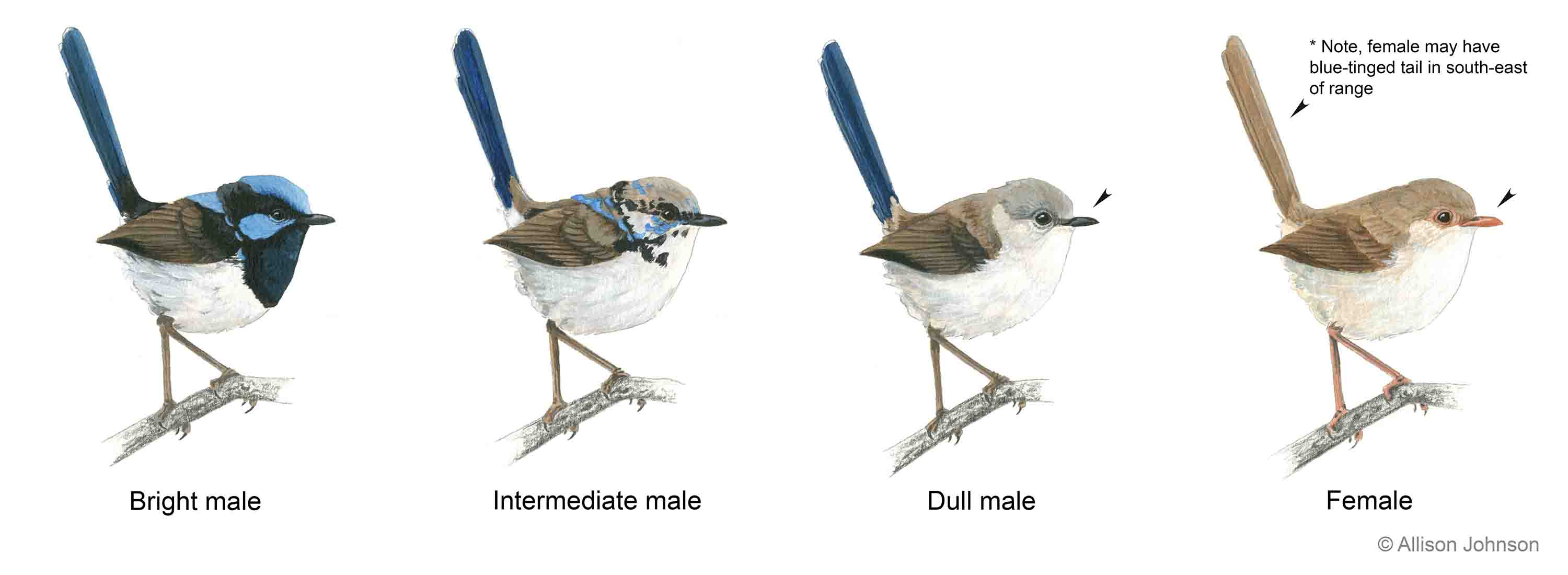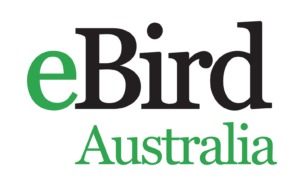Contributing to the Fairywren Project is easy! You can become a citizen scientist by submitting sightings of fairywrens through eBird, a widely-used and easily accessible online birding platform. When you submit your sightings, include a little bit of extra information in the species comments about what you saw and together we can better understand these intriguing birds.
For a printable version of the participation instructions click here.
Step 1: Sign up for eBird
New to eBird? Create an account here. It’s free!
For instructions on how to create a checklist and enter your sightings, see the eBird Quick Start Guide.
Step 2: Subscribe to the Fairywren Project email list
Most of our data are collected through eBird, but there are some data better collected through surveys. If you sign up for our email list you’ll receive periodic updates on the project and occasional surveys asking you about your experiences with fairywrens. This step is encouraged but not required. Subscribe here.
Step 3: Choose a participation level and contribute observations
The Fairywren Project is interested in many aspects of fairywren behavior and ecology. We’ve broken down our data-collection into three levels of participation, beginning with the most important way to contribute. Whether you choose to participate at the basic, intermediate, or advanced level, any data you submit to eBird is a significant contribution.
Basic Participation
Which plumage types are you seeing?
The simplest, but by far the most important way to contribute to the project is to let us know what species and plumage types you’re seeing. We’ve divided plumage into six categories, one for females, three for males, one for dull birds of unknown sex, and one for juveniles:

Bright Male Plumage (b): A bright bird is one that is in full flashy breeding plumage and does not obviously show any dull feathers intermixed with bright feathers. A species bright plumage is typically the plumage the species is known and named for. Only males exhibit bright plumage.
Intermediate Male Plumage (i): Intermediate plumage is a male in any stage between dull (no bright feathers) and completely bright (all bright feathers). An intermediate male may be actively molting, but some species are known to maintain intermediate plumages for months at a time.
Dull Male Plumage (d): Dull male plumage is the species typical winter or non-breeding plumage (sometimes referred to as “eclipse” plumage). A male in dull plumage should show no bright body feathers, although some species like Superb Fairywrens often maintain blue tails year-round, even when in dull plumage.
Female Plumage (f): (Applies to Superb Fairywren, Splendid Fairywren, Variegated Fairywren, Red-winged Fairywren, Blue-breasted Fairywren, Lovely Fairywren, Purple-crowned Fairywren) For most species, this consists of light brown body plumage, and reddish brown lores or ear-coverts, but some species are quite distinct.
Juvenile (j): Juvenile fairywrens exhibit the same plumage as females and can be distinguished from females soon after fledging by their short tails. Once their tails have fully grown in, juveniles are indistinguishable from females and should be recorded as females. Additional field marks for juveniles include begging for food, uncoordinated movements, and short timid flights.
Unknown Dull Plumage - dull male or female (u): What if you can’t distinguish between birds in female plumage and birds in dull male plumage? That’s ok! You can record these sightings as dull unknown. Note: For Red-backed and White-winged Fairywrens, it’s rarely possible to distinguish between males in dull/eclipse plumage, females, and juveniles with fully-grown tails. For these two species, if you cannot clearly see a black bill or bright male plumage, please enter these birds as unknown dull (u) in your species comments.
For more information on each species' plumage types, see our Meet the Fairywrens page.
Submit your plumage type observations:
In your eBird checklist, let us know how many individuals of each plumage type you saw in the species comments. For the eBird app, click on the species name to access the species comments section of the checklist. For the eBird website, click add details to access the species comments. Use these codes to report plumages:
b = bright male, i = intermediate male, d = dull male, f = female, j = juvenile, u = unknown dull
Precede each plumage code with the number of birds of that plumage type you saw and separate each code with a space. The order in which you list the codes does not matter and either uppercase or lowercase (B or b) letters are fine.
Heard only: Did you hear birds but did not see them? That’s ok. Still include them in your species total as you normally would. If the number of birds in your species comments does not add up to the total number of individuals reported, we’ll assume you heard or did not obtain a high quality visual observation of the remaining birds.
Example: Checklist S46694327
8 Variegated Fairywren
2b 4f
10 Superb Fairywren
3b 5f 1d 1u
29 Red-backed Fairywren
8b 21u
Note the total number of birds you report does not need to match the number you identify plumages for if you only heard some of the birds or only saw an individual briefly. Also note that the (u) - unknown code was used for Red-backed Fairy-wrens because it's often very difficult to distinguish dull males from females for this species.
Intermediate Participation
Plumage types and breeding observations
The next step up from the basic level is to report any observations of breeding you observe. eBird makes this easy by including this option already in their app and website. See this link for detailed instructions on submitting breeding records.
We are especially interested in observations such as: Adults with nesting material (eBird code: CN), Nest building (NB), Nest with eggs (NE), Occupied Nest (ON), Nest with Young (NY), Carrying Food (CF), Feeding Young (FY), Recently fledged young (FL).

Bright Splendid Fairywren carrying food. Breeding code: CF
Advanced Participation
Plumage types, breeding observations, and group size observations
The highest level of participation is to add on observations of group size to your sightings of plumages and breeding observations. To approximate group size, we ask that you observe each possible group for five to ten minutes counting how many birds are interacting with one another. Interactions can generally be classified into two categories which are defined by the behaviors taking place: within-group interactions and across-group interactions.
Within-Group Interactions: If birds are allopreening, foraging together, and generally seem content in one another’s presence, this would typically be considered a within-group interaction.
Across-Group Interactions: These interactions are typically defined by higher than normal singing rates, chases, obvious courtship displays, and overt aggression.
For each group you observe, we ask that you identify whether it’s a within-group interaction or an across-group interaction: across-group interactions take precedence over within-group interactions. So if at any point during your 5-10 minute observation you thought an across group interaction occurred, classify the interaction as across-group and report the maximum number of individuals you saw at any one time during your observation. If a group you were observing became engaged in an across-group interaction in the middle of your observation, only list the group and its composition once as an A (across-group) type group.
For each checklist, list the number of the group observed preceded by W (within-group) or A (across-group) For example, WGroup1, AGroup2, WGroup3 for your first, second and third viewed groups, respectively. Follow each of these with the number of individuals for each plumage type seen in each group. Separate each new piece of data with a space and separate each group with a semicolon.
Example: Checklist S46804414
9 Superb Fairywren
Wgroup1 1b 4f; Wgroup2 1d 3f
Not sure about the group size for all the birds you see? That’s ok, you can list the group size and plumage types for the number of groups you are confident of then list the plumages of all of the other birds you observed as above, separated from the other data by a semicolon. For example, if you saw 2 groups but saw an additional 3 birds who you were unsure of group size but could categorize their plumages, you would list segments of information, one for the first group, one for the second group, and one with no group id listing the plumage types of the 3 extra birds (see the Variegated Fairywrens in the example below).
Example: Checklist S47202890
10 Variegated Fairywren
Wgroup1 1b 1i 1f; Wgroup2 1b 1i 1f; 1b 1u 1f
9 Superb Fairywren
Wgroup1 1b 1f; Wgroup2 1b 1f 1d; Wgroup3 1f 1d
Optional Datasheet
Don't want to use eBird in the bush? Write down your sightings on our datasheet then enter your data into eBird when you return home.
Pdf format: FWP Datasheet.pdf
Microsoft Word format: FWP Datasheet.docx
Frequently asked questions
What if I don’t use eBird?
Currently the only way to contribute to the Fairywren project is through eBird. eBird has an entire team of computer programmers working round the clock to make the app better. We recommend using it for all of your birding needs.
What if I want to use eBird but I'm concerned about making my location public?
eBird allows users to hide their location if you are concerned about making your birding locations public. If you hide your location or use an anonymous account name, the Fairywren Project can still access your observation data. Visit the eBird page on Data Privacy to learn more.
Why aren't we using the hyphen in fairy-wren?
Most people hyphenate fairy-wren, and in our publications we do too! However, eBird uses fairywren with no hyphen. This is done to emphasize that fairywrens are not closely related to wrens. We are choosing to use fairywren here to be consistent with eBird’s classification system.
How long should I continue collecting data for the fairywren project?
We hope to continue this study for a number of years to maximize our power in comparing how different environmental conditions in the same locations lead to year-to-year differences. So please do make data collection for the Fairywren Project a normal part of your birding if possible!
What if the species names in my bird book or personal database don’t match up with the species you have listed here?
The Fairywren Project uses the same taxonomy currently used by eBird since these programs are so closely tied together. When eBird updates its taxonomy we’ll update the Fairywren Project. If you notice a difference between the eBird species list and the Fairywren project species list, let us know! Contact us at fairywrenproject@gmail.com.
Where can I find more resources on fairywren identification?
We recommend all the Australia bird guides we've come across, including but not limited to:
The Australia Bird Guide - Menkhorst et al. (CSIRO)
The Field Guide to the Birds of Australia - Pizzey and Knight
Field Guide to Australian Birds - Morcombe
Field Guide to the Birds of Australia - Simpson and Day
Here are a few online resources we've found as well:
BirdLife Australia guide to identifying female fairywrens
Birds Queensland guide to fairywrens of South-east Queensland
Why are two Americans studying Australian birds?
Both Allison and Joe are originally from the United States, but conducted their field research for their PhDs here in Australia. We were both fortunate enough to not only have the opportunity and funding to study Australian birds, but also the opportunity to interact with lots of other Aussies during the course of our research who we've since become good friends with. Its our fascination with the Australian wildlife and our interactions with Aussies (especially birders!) that keep us coming back. We hope you'll let us continue to work with you to study your birds in this wonderful country we call our second home.
More questions?
Check out eBird’s extensive list of frequently asked questions.

